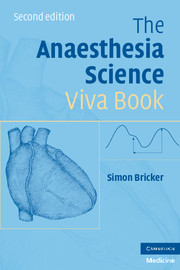Book contents
Preface to the First Edition
Summary
The Final FRCA examination has a daunting syllabus which is tested by a multiple choice paper, by written short answer questions, by one oral examination in clinical anaesthesia, and finally by another in applied basic clinical science. This book is intended to give you some insight into how the clinical science viva works, along with some general guidance as to how to improve your chances of passing. More importantly it aims to provide you with a wide range of potential questions that contain, nonetheless, a manageable amount of information.
The introduction explains the format of the viva, outlines how the questions are constructed, conducted and marked, and offers some advice about technique. The questions then follow, which are typical of those which have appeared, are divided broadly into the four areas which the exam is designed to cover, namely applied anatomy, physiology, pharmacology and clinical measurement. One section, entitled ‘Miscellaneous Science and Medicine’ includes a number of subjects which do not fall readily into any of the other categories.
You may notice that there is some overlap in content with the companion volume, ‘Short Answer Questions in Anaesthesia’. Where this has happened I have reworked the answers both to give more detail and to focus the topic more specifically towards the oral part of the exam, but a degree of duplication in one or two of the questions is inevitable.
- Type
- Chapter
- Information
- The Anaesthesia Science Viva Book , pp. xi - xiiPublisher: Cambridge University PressPrint publication year: 2008

